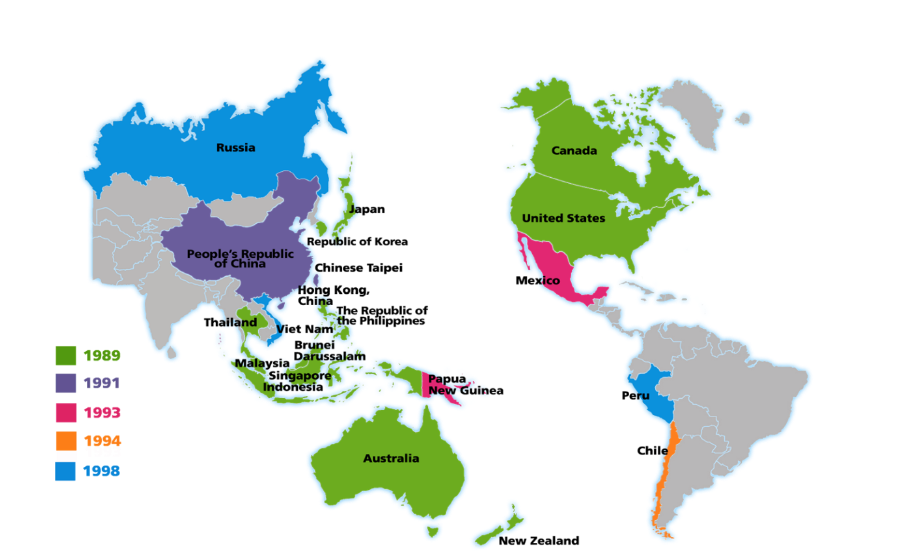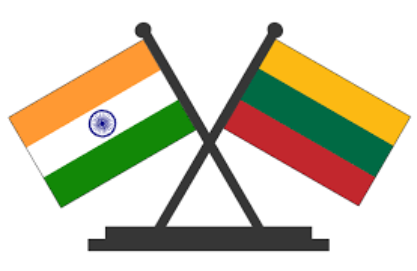Thursday, 30th November 2023
Unlocking India’s solar potential: Phased restrictions on solar inputs will allow redressal of land, labor & capital constraints: FE
Essence: The article lays emphasis on the point that India’s renewable energy target, of which 60% must come from the solar energy, is lacking behind in production capacity. India accounts for 1% of the global production as compared to China which accounts for 71%. Moreover, India is highly dependent on solar cells and modules imports from China. The reason for China’s success is cutting edge technologies and better support from the government. Though Indian government has also provided support in the form of PLI scheme, but this alone will not suffice.
In order to excel in this field, the government has to change the policies governing conventional factors of production, viz., land, labor and capital. The government should ease out on the material needed for solar energy production. It should streamline the process of land acquisition/ purchase process like digitizing the land record. The last thing would be providing appropriate skills to the youth so that they can reap the benefit of increase in employment generation with growing solar sector. The ultimate key to success in tapping solar potential lies in strengthening the domestic production by providing appropriate support.
Why you should read this article?
- To understand the recent steps taken by the government to expand India’s Solar energy.
- To understand the reason for India’s backwardness in this area.
- To understand the aid that the government has to provide to tap the full potential of India’s solar energy sector.
Source:
Social Justice & Sex Education: Vital Today
In News: When education is considered a fundamental right, it's logical for sexual education to be included, leading to a transformation in societal gender relationships.
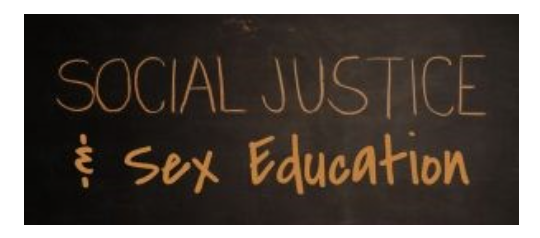
Introduction
In contemporary society, addressing the deepest social cleavages of caste and gender is crucial. The intersection of these identities often disrupts the lives of adolescents and young adults in Indian educational institutions. Media reports frequently highlight caste conflicts and consensual relationships between individuals of different castes, leading to criminal penalties. Recognizing the significance of education in promoting social change and understanding sexuality becomes paramount.
The Current Scenario: Urgent Imperatives for Social Justice and Sexual Education
In the present landscape of our dynamic society, the pressing need for both social justice and sexual education arises from the intricate challenges faced by individuals, particularly adolescents and young adults.
- Navigating Social Cleavages
- Social justice education emerges as a necessary tool to dismantle age-old stereotypes, fostering critical thinking, empathy, and a democratic mindset.
- The current scenario highlights the urgency of instilling equal rights and empowering individuals to challenge discriminatory practices.
- Transforming Gender Relationships
- In tandem with social justice education, sexual education plays a crucial role in reshaping gender relationships.
- The need for comprehensive knowledge about healthy sexual development, consent, and the prevention of sexual abuse is more evident than ever.
- Sexual education becomes an essential component for fostering respect, understanding diverse gender identities, and cultivating safer and healthier environments.
- Empowering Through Knowledge Amidst Challenges
- The contemporary landscape presents challenges such as caste conflicts among adolescents and the criminalization of consensual relationships.
- Social justice education becomes an imperative to address these challenges by nurturing compassionate perspectives and critical voices against societal inequalities.
- Simultaneously, sexual education equips individuals to navigate these complexities, promoting responsible behaviour and respect for diverse sexual preferences.
- Comprehensive Educational Approach
- The intertwined nature of social justice and sexual education calls for a comprehensive educational approach.
- Active learning, critical thinking, and empathetic understanding are integral components needed to empower individuals in the face of societal challenges.
Challenges in Implementing Social Justice and Sexual Education
- Cultural Sensitivities
- Addressing deeply ingrained cultural norms and attitudes poses a significant challenge.
- Some societal beliefs may resist changes brought about by social justice and sexual education, necessitating a delicate balance between cultural sensitivity and progressive educational goals.
- Lack of Comprehensive Curriculum
- In many educational systems, there is a lack of comprehensive curricula for both social justice and sexual education.
- Teacher Preparedness
- Educators often face challenges in adapting to new teaching methodologies, especially when it comes to addressing sensitive topics like social justice and sexuality
- Governmental and Institutional Resistance
- Resistance from certain governmental bodies or institutions may hinder the incorporation of social justice and sexual education into mainstream curricula.
- Lack of Resources
- Limited resources, both financial and educational materials, can hinder the effective implementation of social justice and sexual education programs.
- Stigma and Taboos
- Social stigmas and taboos associated with discussions on sexuality can create barriers to effective sexual education.
- Parental Resistance
- Some parents may resist the inclusion of comprehensive social justice and sexual education in school curricula due to personal beliefs or cultural norms.
- Age-Appropriate Education
- Striking the right balance between age-appropriate content and the need for comprehensive education is challenging.
The Way Forward in the Present Scenario
- Government Advocacy-Advocacy for robust government support in the form of policies and initiatives addressing discriminatory practices is imperative for effective social justice and sexual education.
- Educator Preparedness-Training educators to effectively deliver both social justice and sexual education ensures the successful implementation of these crucial components in the current educational landscape.
- Community Engagement-Raising public awareness about the importance of comprehensive education in navigating societal challenges is essential. Engaging communities enhances the effectiveness of these educational initiatives.
Source: TH
Ban on Halal Certificate in U.P.-Unravelling the Reasons
In News: Recently, the Uttar Pradesh Government imposed an immediate ban on the "manufacture, sale, storage, and distribution of halal-certified products."
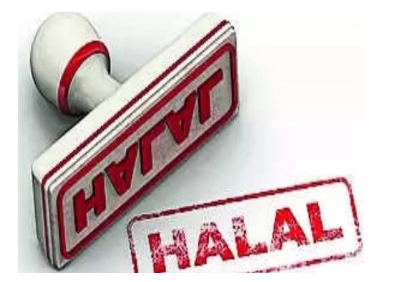
Ensuring Compliance with Islamic Law: The Halal Certification Process in India
- Halal certification serves as a meticulous process ensuring adherence to Islamic Law for various products and services.
- This certification guarantees that items, particularly in the food, cosmetic, and pharmaceutical sectors, are prepared according to Islamic principles, free from forbidden components, and untainted by impure substances or objects.
- In India, third-party bodies, including private companies like MTR, Venky’s, Sufi, and McDonald’s, play a pivotal role in providing Halal certification.
- This process is particularly prominent in the meat industry and extends to a range of food products, from milk to additives, ensuring consumers that the products align with Islamic dietary laws.
Decoding Halal Certification: Ensuring Permissibility in Products
- Halal-Certified Product Defined
- A Halal-certified product is one that aligns with Islamic law, ensuring it is permissible for consumption by Muslims.
- The Arabic term "halal" translates to "permissible," emphasizing adherence to specific guidelines laid out in Islamic dietary laws.
- Application Across Sectors
- Halal certification extends its influence to various sectors, including Food, Cosmetics, and Pharmaceuticals.
- This certification guarantees that products in these industries are prepared in accordance with Islamic principles, ensuring they meet the criteria for consumption by the Muslim community.
- Stringent Compliance Measures
- Halal certification serves as a stringent measure to guarantee that food is prepared in strict adherence to Islamic law, maintaining its purity and authenticity.
- It assures consumers that products do not contain any forbidden components and have not come into contact with substances or objects deemed impure.
Controversy Surrounds Halal Certification Ban in Uttar Pradesh
Overview
- On November 18, the Uttar Pradesh government implemented an immediate ban on the production, storage, distribution, and sale of halal-certified products in the state.
- The ban encompasses food, medicines, and cosmetic items, excluding those intended for export.
- The government cited public health concerns and the prevention of confusion as reasons for the ban, asserting that the halal tag was being exploited for propaganda and to manipulate religious sentiments.
Key Points
- Scope of Ban-The ban covers a broad spectrum, affecting various sectors, including food, pharmaceuticals, and cosmetics. However, products manufactured for export are exempt from these restrictions.
- Public Health Rationale-The government claims that the ban is in the interest of public health. It aims to prevent confusion among consumers and address concerns related to the use of the halal tag.
- Debates and Discussions-The decision has ignited debates regarding religious preferences, business practices, and its potential impact on societal unity. Stakeholders are engaging in discussions to understand the implications of the ban on various aspects of daily life.
- Halal Certification Defined-Halal-certified products, defined as "permissible" by Islamic law, are usually identified by the letter M. The certification involves authorization by Muslim councils or Halal supervision boards, allowing companies to display the "Halal-certified" logo on their packaging.
Conclusion
The ban on halal-certified products in Uttar Pradesh has become a focal point of discussions, raising questions about the intersection of religious practices, business, and the potential societal repercussions. As stakeholders navigate this decision, the broader implications on consumer choices and communal harmony are subjects of ongoing debate.
Source: TH
Bitcoins: What and how? - Edukemy Current Affairs
In News: The SIT of the CID investigating the bitcoin scam has issued a notice to the Prison and Correctional Services Department, requesting various details.
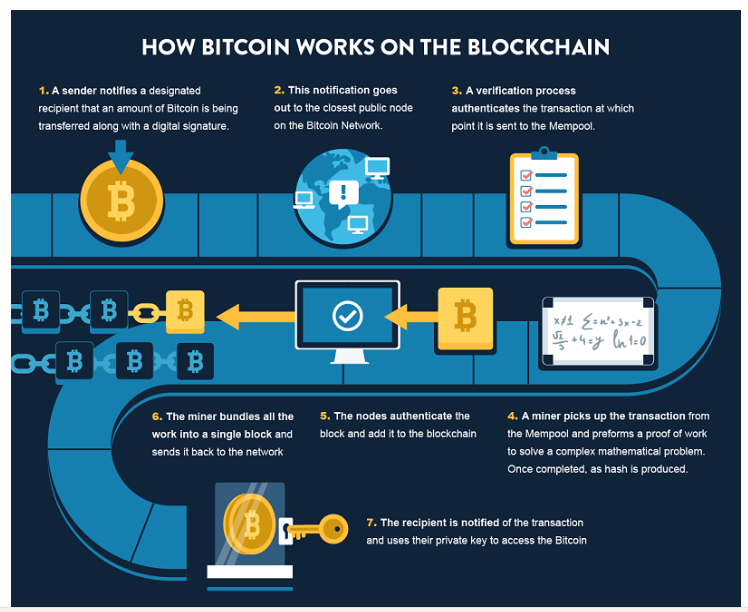
Introduction
- Bitcoin, introduced in 2009, stands as a pioneering form of digital currency facilitating instant payments without the involvement of any central authority.
- Based on an open-source protocol, it has significantly impacted the financial landscape.
Cryptic Origins and Historical Significance
- The origins of Bitcoin remain mysterious, with an individual or group named Satoshi Nakamoto conceptualizing it post the 2008 financial crisis.
- Bitcoin emerged as an alternative to fiat money, aiming to provide a decentralized medium of exchange.
Utilization Beyond Fiat Money
- Originally intended as an alternative to government-issued fiat currencies, Bitcoin found application as a universally accepted medium of exchange between involved parties.
- Fiat money, lacking commodity backing, is contrasted with Bitcoin's decentralized nature.
Blockchain Technology and Transaction Transparency
- The backbone of Bitcoin is the blockchain, an open ledger containing all transactions in an anonymous and encrypted form.
- Blockchain's decentralized and transparent nature revolutionizes transaction recording, making it applicable to various assets.
Blockchain Beyond Bitcoin
- Blockchain's applications extend beyond Bitcoin, with governments using it for traceable land records.
- Election commissions explore its potential for remote voting.
- The technology, likened to a decentralized Google Doc, ensures shared access and traceability.
Acquiring Bitcoins
- Bitcoins can be acquired through mining, exchange purchases, or over-the-counter transactions.
- Mining involves validating transactions and securing the network.
- The fixed rate of new Bitcoin creation and the 21-million-unit limit contribute to its unique supply dynamics.
Regulation Dynamics and Legal Status in India
- Bitcoin operates outside traditional regulatory structures, with its supply regulated by software and user agreement.
- Governments globally explore Central Bank Digital Currencies (CBDCs).
- In India, while cryptocurrencies lack legal tender status, the Supreme Court overturned the RBI ban on virtual currencies, recognizing them as commodities.
Factors Influencing Bitcoin's Value Surge
- Increased acceptance during the pandemic boosted Bitcoin's credibility.
- Support from major players like PayPal and Indian banks contributed to Bitcoin's global legitimacy.
- Investments from pension and insurance funds signalled growing institutional acceptance.
- Bitcoin's journey is marked by its disruptive technology, regulatory challenges, and a surge in value influenced by evolving global dynamics.
Source: TH
Rat Hole Mining - Edukemy Current Affairs
In News: The National Green Tribunal banned rat-hole mining in Meghalaya due to safety risks for miners and environmental hazards. It raises concerns about child labour as well.
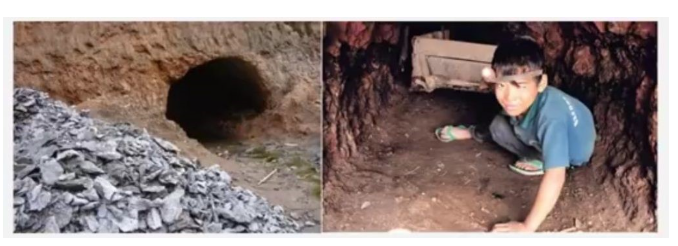
Rat-Hole Mining: Unearthing Coal Amidst Hazards
- Overview
- Rat-hole mining, prevalent in Meghalaya, involves extracting coal from narrow, horizontal seams through small pits termed "rat holes."
- Miners descend these pits using rudimentary tools, posing significant safety and environmental concerns.
- Mining Techniques
- Side-Cutting Procedure-Narrow tunnels are dug on hill slopes until workers reach the thin coal seam, typically less than 2 meters.
- Box-Cutting-A rectangular opening is made, and a vertical pit is dug, followed by the creation of rat-hole-sized horizontal tunnels for coal extraction.
- Concerns and Hazards
- Safety Hazards-Unregulated mines lack safety measures, exposing workers to risks such as inadequate ventilation and structural support.
- Environmental Impact-Rat-hole mining contributes to ecological problems, including river acidification, land degradation, deforestation, and water pollution.
- Acid Mine Drainage (AMD)-Acidic runoff from the mine’s harms water quality, diminishing biodiversity in affected water bodies.
Challenges and Persistence
- In 2014, the National Green Tribunal (NGT) imposed a ban on rat-hole mining, citing its unscientific nature.
- Despite the ban, this mining practice remains widespread, leading to numerous accidents and fatalities in the Northeastern state.
- In 2018, an illegal mining incident trapped 15 individuals in a flooded mine, resulting in two recoverable bodies after a prolonged rescue operation lasting over two months.
- A similar tragedy occurred in 2021, with five miners trapped in a flooded mine. Three bodies were recovered before the month-long rescue operation was called off.
- Apart from the human toll, rat-hole mining inflicts environmental pollution. The method's continuation poses risks to ecosystems and water bodies in the region.
- Mining stands as a crucial revenue source for the state government.
- The Manipur government has challenged the NGT ban, asserting that no other viable mining option exists for the region.
- This reflects the tension between economic considerations and the environmental fallout of rat-hole mining.
- Despite a panel appointed by the Meghalaya High Court in 2022 confirming the unabated continuation of rat-hole mining, regulatory oversight faces challenges in curbing this perilous and environmentally damaging practice.
|
UPSC Previous Year Questions Mains (2017) Q. “In spite of adverse environmental impact, coal mining is still inevitable for development”. Discuss. |
Source: TH
Chief Secretary - Edukemy Current Affairs
In News: On November 29, the Supreme Court affirmed the Centre’s recommendation to grant a six-month extension of service to the Chief Secretary of Delhi.
Chief Secretary of State: Appointment, Role, and All India Services
Appointment Process
- The Chief Minister selects the Chief Secretary.
- The appointment is executed in the name of the State Governor.
Position and Role
- The Chief Secretary holds the highest rank in the civil services of Indian states and union territories.
- This position, specific to the Indian Administrative Services (IAS) cadre, serves as the primary advisor to the Chief Minister on cabinet matters.
Tenure and Exclusion
- The Chief Secretary's role is excluded from the tenure system, lacking a fixed term.
All India Services (AIS): Historical and Constitutional Context
- Pre-Independence-The Indian Civil Service (ICS) and Imperial Police were prominent.
- Post-Independence-The need for All India Services was recognized to maintain national unity. The Indian Administrative Service (IAS) and Indian Police Service (IPS) were formed under Article 312 of the Constitution.
Recruitment and Postings
- UPSC recruits’ members for All India Services.
- Officers serve under State and Central governments, enhancing the unitary character of the Indian federation.
Controlling Authorities
- Ministry of Personnel, Public Grievances and Pensions controls IAS.
- Union Home Ministry oversees IPS officers.
IAS Cadre Rules: Deputation and Extension
- Cadre officers may be deputed to the Centre or another State with concurrence from relevant authorities.
- Extension of service is permissible in public interest, with Chief Secretaries eligible for a six-month extension.
Precedence in Deputation
- Concurrence from AIS officers are necessary before deputation to the Centre.
- Nominations are invited from State governments, scrutinized for eligibility, and an offer list is created for Central Ministries to choose from.
Refusal of Order
- All India Services (Discipline and Appeal) Rules, 1969 lack clarity on penalties for refusal.
- State governments hold the authority to institute proceedings and impose penalties during the officer's service in connection with State affairs.
Source: TH
Election Commission of India (ECI)
In News: The Election Commission of India suspended three police officers for 'partisan policing' based on a report about the seizure of ₹18 lakh cash in Musheerabad.
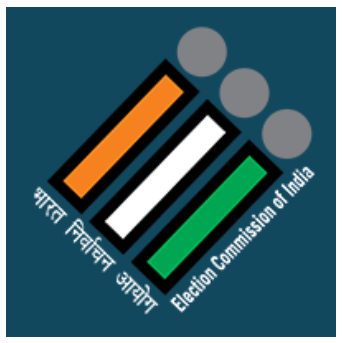
Election Commission of India: Guardians of Democratic Processes
- Overview
- The Election Commission of India (ECI), a constitutional authority, autonomously oversees Union and State elections since its establishment on January 25, 1950.
- It plays a pivotal role in administering democratic processes in the country.
- Constitutional Foundation
- Constitutional provisions under Part XV (Article 324-329) empower the ECI.
- Article 324 vests the superintendence, direction, and control of elections in the Election Commission.
- Responsibilities
- Administers elections for the Lok Sabha, Rajya Sabha, State Legislative Assemblies, President, and Vice President.
- Distinct from elections to panchayats and municipalities, managed by separate State Election Commissions.
- Structural Evolution
- Initially, a single election commissioner existed.
- Amended in 1989, transforming the ECI into a multi-member body.
- Presently comprises the Chief Election Commissioner (CEC) and two Election Commissioners.
- At the state level, supported by the Chief Electoral Officer, an IAS rank Officer.
- Appointment and Tenure
- The President appoints the CEC and Election Commissioners.
- Fixed tenure of six years or until the age of 65, whichever is earlier.
- Enjoy the status, salary, and perks equivalent to Supreme Court Judges.
- Removal Mechanism
- Commissioners can resign or be removed before the term.
- Removal process mirrors that of Supreme Court judges, requiring parliamentary proceedings for the CEC.
|
UPSC Previous Year Questions Prelims (2017) Q. Consider the following statements:
Which of the statements given above is/are correct? (a) 1 and 2 only Ans: (d) Mains (2022) Q. Discuss the role of the Election Commission of India in the light of the evolution of the Model Code of Conduct. |
Source: TH
Pradhan Mantri Janjati Adivasi Nyaya Maha Abhiyan (PM-JANMAN)
In News: Recently, the Union Cabinet sanctioned a special development mission for Particularly Vulnerable Tribal Groups (PVTG) with a total budget exceeding ₹24,104 crore.

About PM-JANMAN
- Pradhan Mantri Janjati Adivasi Nyaya Maha Abhiyan (PM-JANMAN) is a flagship program of the Government of India launched in 2023 to improve the socio-economic conditions of Particularly Vulnerable Tribal Groups (PVTGs).
- The program aims to saturate PVTG households and habitations with basic facilities such as safe housing, clean drinking water and sanitation, improved access to education, health and nutrition, road and telecom connectivity, and sustainable livelihood opportunities.
- The program is being implemented by the Ministry of Tribal Affairs in collaboration with other ministries and departments of the Government of India.
- It is a centrally sponsored scheme with a budget of ₹1.5 lakh crore for the period 2023-2028.
The program has 11 critical interventions, which are as follows:
- Housing
- Water and sanitation
- Education
- Health and nutrition
- Road and telecom connectivity
- Livelihood opportunities
- Skill development
- Women empowerment
- Security and justice
- The program is expected to benefit about 2 crore PVTGs across the country
The following are some of the key expected outcomes of the PM-JANMAN program
- Improved access to basic facilities-The program will help to ensure that all PVTG households have access to safe housing, clean drinking water, sanitation, education, health, and nutrition.
- Increased economic opportunities-The program will create sustainable livelihood opportunities for PVTGs, helping them to improve their economic well-being.
- Strengthened social and cultural identity-The program will help to preserve and strengthen the social and cultural identity of PVTGs.
- The PM-JANMAN program is a comprehensive and ambitious effort to improve the lives of PVTGs. It is a testament to the commitment of the Government of India to the welfare of all its citizens.
Source: TH
The Fast Track Special Court Scheme
In News: Recently, the Union Cabinet approved the extension of fast-track courts, established for expeditious resolution of sexual offense cases, for additional three-years

- Background
- Fast track courts (FTCs) recommended by the Eleventh Finance Commission in 2000 to address court pendency.
- Rs 502.90 crore granted for 1,734 additional courts for five years.
- Central government ceased funding in 2011, leading to varied state responses.
- Nirbhaya Fund initiated post-2012 incidents, contributing to setting up fast-track Mahila Courts.
- Scheme for Fast Track Special Courts (FTSCs)
- 2019 scheme approved for 1,023 FTSCs nationwide, specifically for expedited disposal of pending rape cases and POCSO Act offenses.
- Supreme Court directed centrally funded special court in districts with over 100 POCSO FIRs.
- FTSCs aim for swifter justice, enhancing deterrence against sexual offenders.
- Performance of FTSCs
- NCRB data (2019): Pendency rate for rape cases at 89.5%, conviction rate 27.8%.
- POCSO cases: 88.8% pending, 34.9% convictions.
- Issues with FTCs
- Lack of Infrastructure
- Operate similarly to regular courts, lacking process improvements.
- Absence of supporting infrastructure for meeting timelines.
- No Clear Mandate
- Ambiguity on the types of cases falling under FTSC purview.
- Example: Nirbhaya Fund's FTSCs lacked clarity on handling various gender-based violence cases.
- Delay in Judgement
- Witness absence and lawyer-requested adjournments major causes of delays.
- Litigation culture encourages seeking adjournments, contributing to delays.
- Overburdened judges, with around 21% of sanctioned positions vacant.
- Lack of Infrastructure
- Way Forward
- Capacity Building
- Dedicated judges for regular hearings.
- Competent staff (stenographers, clerks) for efficient evidence processing.
- Process Engineering
- Reengineering time-consuming processes.
- Realistic time assessment for hearings with a structured timetable.
- Clear Mandate
- Define clear mandates for FTSCs, similar to practices in Spain and Liberia.
- Automatic transfer of gender-based violence cases to FTSCs.
- Capacity Building
Source: TH
Sixteenth Finance Commission: Terms of Reference
In News: Recently, the Union Cabinet endorsed the terms of reference (ToR) for the Sixteenth Finance Commission.
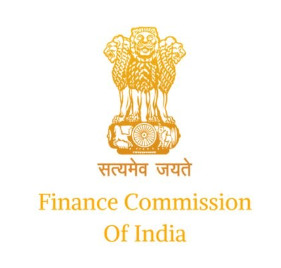
Introduction
- Constitutional bodies under Article 280, established every five years.
- Primary role: Recommend distribution of financial resources between Union and states.
Recommendations: Three Aspects
- Vertical Devolution
- Involves states' share in the divisible pool of central taxes.
- Horizontal Distribution
- Allocation of resources among states based on fiscal needs, capacities, and performance.
- Grants-in-aid
- Additional transfers to states or sectors requiring assistance or reform.
Successful Recommendations
- Examples of impactful suggestions over the years:
- Tax devolution as a major component, increasing states' share from 10% to 42%.
- Performance-based incentives for fiscal discipline, population control, and more.
- Introduction of disaster relief funds, grants for local bodies, and specific sectors.
Implementation and Monitoring
- Recommendations advisory but usually accepted, with minor modifications.
- Accepted recommendations notified through a Presidential Order, specifying the validity period.
- Implementation monitored by Union and state-level ministries and departments.
Challenges
- Data Gaps and Quality Issues
- Reliance on incomplete, inconsistent, or outdated official data.
- Political Economy Factors
- Balancing interests of various stakeholders, adapting to changing scenarios.
- Implementation Challenges
- Ensuring feasibility, acceptability, and effectiveness of recommendations.
- No direct control over implementation by governments.
- Evaluation Difficulties
- Challenges in assessing impact, outcomes, and attributing causality.
Way Forward
- Provide predictable resources to Union and states based on constitutional responsibilities.
- Encourage sound fiscal policies and efficient public spending.
- Respond proactively to challenges posed by GST, Covid-19, climate change, and digital transformation.
- Improve analytical and advisory capabilities, enhance communication, and engage stakeholders.
|
UPSC Previous Year Questions Prelims (2023) Q. Consider the following:
For the horizontal tax devolution, the Fifteenth Finance Commission used how many of the above as criteria other than population area and income distance? (a) Only two Ans: (b) Mains (2013) Q. Discuss the recommendations of the 13th Finance Commission which have been a departure from the previous commissions for strengthening the local government finances. |
Source: TH
Indian Renewable Energy Development Agency (IREDA)
In News: IREDA experiences an almost 100% gain on its listing day.
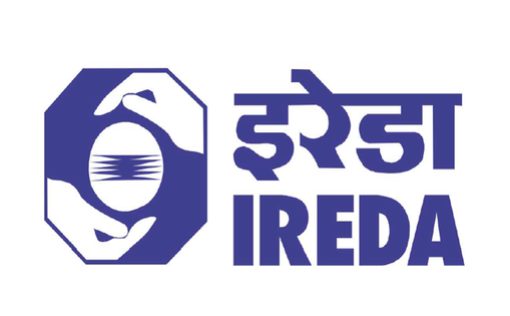
About IREDA
- IREDA, a Mini Ratna (Category–I) non-banking financial institution, operates under the administrative jurisdiction of the Ministry of New and Renewable Energy (MNRE).
- Established in 1987 as a Public Limited Government Company, it functions as a Non-Banking Financial Institution (NBFC).
- Designated as a "Public Financial Institution" under section 4 ‘A’ of the Companies Act, 1956, and registered as an NBFC with the Reserve Bank of India (RBI), REDA primarily focuses on promoting, developing, and providing financial assistance for projects related to new and renewable energy sources, as well as energy efficiency and conservation.
- With the motto "ENERGY FOR EVER," IREDA aims to offer financial support to specific projects and schemes dedicated to generating electricity or energy through new and renewable sources while emphasizing energy conservation through efficiency measures.
- One of its key objectives is to maintain a prominent position as a leading organization facilitating efficient and effective financing for projects in the realm of renewable energy and energy efficiency or conservation.
- IREDA sustains its financial operations by garnering revenue through interest and principal repayments from the projects it funds, in addition to raising funds from the market and through borrowings.
Source: BL
Share the article
Edukemy’s Current Affairs Quiz is published with multiple choice questions for UPSC exams
MCQ
Get Latest Updates on Offers, Event dates, and free Mentorship sessions.

Get in touch with our Expert Academic Counsellors 👋
FAQs
UPSC Daily Current Affairs focuses on learning current events on a daily basis. An aspirant needs to study regular and updated information about current events, news, and relevant topics that are important for UPSC aspirants. It covers national and international affairs, government policies, socio-economic issues, science and technology advancements, and more.
UPSC Daily Current Affairs provides aspirants with a concise and comprehensive overview of the latest happenings and developments across various fields. It helps aspirants stay updated with current affairs and provides them with valuable insights and analysis, which are essential for answering questions in the UPSC examinations. It enhances their knowledge, analytical skills, and ability to connect current affairs with the UPSC syllabus.
UPSC Daily Current Affairs covers a wide range of topics, including politics, economics, science and technology, environment, social issues, governance, international relations, and more. It offers news summaries, in-depth analyses, editorials, opinion pieces, and relevant study materials. It also provides practice questions and quizzes to help aspirants test their understanding of current affairs.
Edukemy's UPSC Daily Current Affairs can be accessed through:
- UPSC Daily Current Affairs can be accessed through Current Affairs tab at the top of the Main Page of Edukemy.
- Edukemy Mobile app: The Daily Current Affairs can also be access through Edukemy Mobile App.
- Social media: Follow Edukemy’s official social media accounts or pages that provide UPSC Daily Current Affairs updates, including Facebook, Twitter, or Telegram channels.

